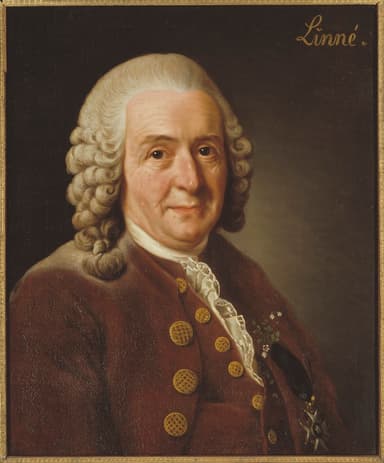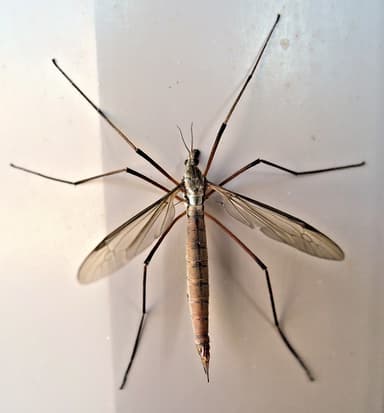Myths about teaching can hold you back
- Year 6
Carl Linnaeus and classification
I can describe the work of Carl Linnaeus and his contribution to how we classify living things.
- Year 6
Carl Linnaeus and classification
I can describe the work of Carl Linnaeus and his contribution to how we classify living things.
These resources were made for remote use during the pandemic, not classroom teaching.
Switch to our new teaching resources now - designed by teachers and leading subject experts, and tested in classrooms.
Lesson details
Key learning points
- Taxonomy is the science of naming, describing and grouping all living things.
- Scientists have improved classification of organisms over time as they've been able to make more accurate observations.
- Carl Linnaeus is most famous for creating a system of naming living things.
- His ideas on classification have influenced generations of biologists during, and after, his own lifetime.
- His system for naming and classifying living things is still used today.
Keywords
Scientist - A scientist is a person who learns about science and carries out enquiries.
Organism - An organism is a living thing.
Taxonomy - Taxonomy is the science of naming, describing and grouping all living things.
Classify - To classify things is to sort them into groups.
Carl Linnaeus - Carl Linnaeus was a Swedish botanist and taxonomist who created a scientific naming system for living things.
Common misconception
Pupils may think that animals are classified according to their habitat, for example aquatic animals, or by their method of movement, for example creeping animals.
Explain that Aristotle classified animals into water, air and land groups, but there are problems with this method, e.g. this would put birds, bees and bats in the same group. Use the examples in the lesson to make clear the correct groupings.
To help you plan your year 6 science lesson on: Carl Linnaeus and classification, download all teaching resources for free and adapt to suit your pupils' needs...
To help you plan your year 6 science lesson on: Carl Linnaeus and classification, download all teaching resources for free and adapt to suit your pupils' needs.
The starter quiz will activate and check your pupils' prior knowledge, with versions available both with and without answers in PDF format.
We use learning cycles to break down learning into key concepts or ideas linked to the learning outcome. Each learning cycle features explanations with checks for understanding and practice tasks with feedback. All of this is found in our slide decks, ready for you to download and edit. The practice tasks are also available as printable worksheets and some lessons have additional materials with extra material you might need for teaching the lesson.
The assessment exit quiz will test your pupils' understanding of the key learning points.
Our video is a tool for planning, showing how other teachers might teach the lesson, offering helpful tips, modelled explanations and inspiration for your own delivery in the classroom. Plus, you can set it as homework or revision for pupils and keep their learning on track by sharing an online pupil version of this lesson.
Explore more key stage 2 science lessons from the Why we group and classify living things unit, dive into the full primary science curriculum, or learn more about lesson planning.

Equipment
Large paper for Task A would be helpful. Access to the internet and books for research.
Licence
Prior knowledge starter quiz
6 Questions
Q1.Scientists sort living things into groups based on similarities and between their observable characteristics.
Q2.What do we do when we classify things?
Q3.What is an organism?
Q4.Match the living things to the correct group.
birds
mammals
insects
molluscs
fish
Q5.Animals that do not have a backbone or interior skeleton are called .
Q6.What do these living things all have in common?

Assessment exit quiz
6 Questions
Q1.Why didn’t scientists working centuries ago, like Aristotle, identify micro-organisms as living things?
Q2.The science of naming, describing and grouping all living things is called .
Q3.What is Swedish scientist Carl Linnaeus famous for?

Q4.Carl Linnaeus created the binomial system for living things that we still use today. What is the binomial system used for?
Q5.Which of these names for this organism uses the binomial system?



